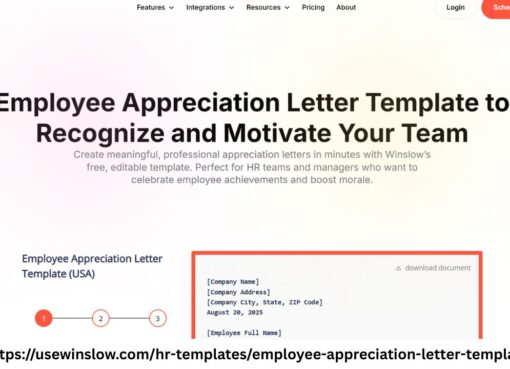Why ZK Development Is Crucial for Blockchain Scalability in 2025?

Blockchain has revolutionized data transparency, security, and decentralization, but it still grapples with a persistent challenge: scalability. As transaction volumes surge and decentralized applications (dApps) gain popularity, many blockchains experience congestion, high fees, and sluggish confirmation times. In 2025, scalability is more critical than ever. Zero-Knowledge (ZK) technology has emerged as a frontrunner in solving these issues, offering a powerful framework to scale blockchain ecosystems without compromising security or decentralization. This blog explores why ZK tech development is indispensable for blockchain scalability in 2025. We’ll examine the foundations of ZK proofs, key technologies like ZK-rollups, their role in Ethereum and other ecosystems, and how developers, enterprises, and users benefit from integrating ZK solutions.
Zero-Knowledge Proofs (ZKPs) are cryptographic techniques that allow one party (the prover) to prove to another (the verifier) that a statement is true without revealing any underlying data.
- Types of ZKPs:
- ZK-SNARKs (Succinct Non-interactive Argument of Knowledge)
- ZK-STARKs (Scalable Transparent Argument of Knowledge)
These proofs are essential for both privacy-preserving computations and reducing the computational burden on blockchain networks.
The scalability trilemma postulates that decentralized networks must balance security, decentralization, and scalability. Most current blockchains excel at two but compromise the third.
ZK-rollups allow networks to enhance scalability without sacrificing security or decentralization. They compress hundreds of transactions into a single proof posted on-chain, drastically reducing the data load.
ZK-rollups execute transactions off-chain and submit succinct validity proofs on-chain.
- Key Features:
- Batch transactions
- Compress data
- Prove correctness with cryptographic assurance
- Require less gas
Examples:
- zkSync Era
- StarkNet
- Polygon zkEVM
These systems demonstrate how ZK-rollups can vastly improve transaction throughput without security trade-offs.
Ethereum’s future depends on rollups.
- Proto-Danksharding (EIP-4844) and Danksharding are being implemented to provide rollups with cheap data availability.
- Vitalik Buterin has emphasized ZK-rollups as the “end game” for Ethereum scalability.
With rising demand for NFT minting, DeFi trades, and gaming, Ethereum needs ZK-rollups to remain performant.
Both are Layer 2 scaling solutions, but they differ fundamentally:
| Feature | ZK-Rollups | Optimistic Rollups |
|---|---|---|
| Proof Type | Validity (cryptographic) | Fraud (game-theoretic) |
| Finality Time | Minutes | Up to 7 days |
| Security | Immediate, cryptographic | Delay-based, challenge period |
| Data Efficiency | Higher | Lower |
As users and developers prioritize speed, security, and UX, ZK-rollups become increasingly favorable.
| Feature | ZK-SNARKs | ZK-STARKs |
| Trusted Setup | Required | Not required |
| Proof Size | Smaller | Larger (but improving) |
| Verification Time | Fast | Faster |
| Post-Quantum Resistance | No | Yes |
Both have use cases, but STARKs are gaining attention for their scalability and transparency advantages.
- zkSync Era: Scales Ethereum dApps with zkEVM support.
- StarkNet: Powers DeFi protocols, NFT marketplaces, and games.
- Mina Protocol: Lightweight blockchain using recursive ZKPs.
- Polygon zkEVM: Offers Ethereum compatibility with ZK-rollup performance.
- Scroll: Provides developer-friendly zk-rollup for Ethereum.
Enterprises like ConsenSys, Visa, and JPMorgan are also exploring ZKPs for supply chain, payments, and compliance.
- Lower Gas Costs: Bulk transactions reduce fees.
- Scalability: Handle thousands of TPS off-chain.
- Security: Cryptographic guarantees remove reliance on incentives.
- Compatibility: zkEVMs support Solidity and existing Ethereum tools.
- Privacy Options: Use selective disclosure without sacrificing transparency.
To build ZK-enabled apps, developers use specialized languages:
- Circom: Circuit compiler for SNARKs.
- Cairo: Language developed for StarkNet.
- Noir: Aztec’s domain-specific language for privacy-oriented ZK circuits.
Tools and frameworks:
- SnarkJS
- ZoKrates
- zkInterface
- StarkWare’s tooling suite
ZKPs can prove compliance (e.g., KYC, AML) without revealing personal data:
- Proof of Age: Verify eligibility without disclosing birthdate.
- Proof of Reserves: Prove solvency without revealing amounts.
- Identity Systems: Civic, zkPass, and Shyft Network leverage ZK for Web3 identity.
This intersection of privacy and verifiability is crucial for enterprise and regulatory adoption.
- DeFi:
- Faster trades and settlements
- Reduced slippage and costs
- Enhanced front-running resistance
- NFTs:
- Batch minting
- Compressed metadata proofs
- Private ownership verification
ZK tech can help DeFi scale to billions in TVL and bring NFTs to mainstream users.
- Interoperability: ZK bridges reduce trust assumptions.
- Modular Chains: Use ZK-rollups for execution, with separate DA layers (Celestia, EigenLayer).
- Recursive ZKPs: Allow proof of multiple blocks in a single zkProof—essential for syncing light clients or validating entire chains.
- Complexity: High learning curve for cryptography and circuits.
- Tooling Maturity: Rapidly evolving but still nascent.
- Proof Generation Time: Improving but still intensive.
- Onboarding Developers: Requires education and streamlined frameworks.
However, educational resources, hackathons, and better libraries are closing the gap.
The ZK sector has seen major VC interest:
- StarkWare: $8B valuation
- Matter Labs (zkSync): Over $200M raised
- Polygon zkEVM: Aggressive R&D and acquisition of Mir protocol
Institutions are recognizing ZK as a pillar for scaling Web3 applications securely.
In 2025, we stand at the precipice of mass Web3 adoption, and scalability is the make-or-break factor. ZK development offers an elegant, mathematically secure, and performance-driven solution that outpaces traditional Layer 2s and monolithic Layer 1 scaling attempts. From Ethereum’s roadmap to enterprise adoption, ZK technology is no longer an experimental add-on it’s a necessity. Developers, protocols, and businesses embracing ZK now will define the next era of scalable, privacy-preserving, and efficient blockchain infrastructure. If Web3 is to serve billions of users, ZK development will be at the core of that future.






Leave a Comment